2021 Ford Mustang Mach-E Review: EV Power to the People

FAST FACTS
| Motor: | 2x electric motors, 88-kWh battery pack |
| Output: | 346 hp, 428 lb-ft |
| Transmission: | 1AT, AWD |
| US fuel economy (MPGe): | 96/84/90 |
| CAN fuel economy (Le/100KM): | 2.4/2.8/2.6 |
| Range: | 270 miles (435 km) |
| Starting Price (USD): | $43,995 (inc. dest.) |
| As-Tested Price (USD): | $62,160 (inc. dest.) |
| Starting Price (CAD): | $52,395 (inc. dest.) |
| As-Tested Price (CAD): | $74,045 (inc. dest.) |
I can’t write what the gentlemen said when he spotted the 2021 Ford Mustang Mach-E sitting at a red light.
Our new friend wasn’t ranting about the lack of V8, or the tenuous design links between the Mustang in front of him and the nameplate’s 57 years of history. No, he had stopped mid-step to launch into a profanity-laced exclamation of disbelief. Here in front of him was a blankin’ sick electric blankin’ Mustang SUV.
Dude was excited.
And thus the electric pony passed an important litmus test. Ford has built a solid EV to launch right in the heart of the market—the mid-size crossover space—but its on-paper specs barely matter. To be a true success, the Mach-E needs to win hearts as much as, if not more than, minds. Thankfully, the Mach-E succeeds on both fronts with only minor hangups, making this not just a good first attempt at an EV crossover, but a great crossover full stop.
What’s new?
What isn’t? The Mach-E represents a whole new era at the Blue Oval. It rolls on a new, dedicated EV platform, available with one of two battery capacities. The 68-kWh battery pack is standard, while higher trims offer an optional 88-kWh pack. Rear-wheel drive and all-wheel drive are available with either battery pack. The shortest range is 211 miles (340 km) for the AWD Standard Range, with the rear-drive, big-battery California Route 1 hitting an EPA-certified 305 miles (490 km). This First Edition model is essentially the Premium AWD Extended Range, which rings in at a fine 270 miles (435 km) between plug-ins.
It’s been over 18 months since Ford first showed the Mach-E to the world, and half a year of it being at dealers. Anything I say about the looks is unlikely to sway your opinion one way or the other. What I can tell you is that nothing I’ve driven since that debut has drawn as much attention as the bright red Mach-E. Not a pink Taycan, not the drop-dead gorgeous Lexus LC—nothing. That will surely change as the Mach-E proliferates across North American roads. But for now, it’s an attention sponge.
I’ll admit I’m warming to the Mach-E’s styling quite a bit. The front end does one of the best jobs yet of adapting to the grille-less needs of EVs. The flanks aren’t overstyled like some other modern crossovers. Clever use of black on the roof gives the appearance of a coupe-over roofline without actually eating into rear head room. The strong shoulder lines lead into a well-executed spin on the classic tri-bar taillight setup. “You have to see it in person” might be a common refrain, but that’s the case here.
How does it drive?
That galloping pony on the nose promises a certain level of driving excitement. The good news is the Mach-E is genuinely enjoyable to drive. The bad news is that it’s the sort of experience traditionalists might not love—though Cars and Coffee crowds might be thankful.
The Mach-E will surge forward when you lay into the throttle, so on that front, it’s pretty familiar. Ford quotes 346 hp and 428 lb-ft, and even though it weighs more than any Mustang before it, the immediate slug of EV torque masks the weight off the line. It feels about in-line with an EcoBoost coupe, and easily good for the quoted 5.1-second 0–60 mph (0–96 km/h) time.
My first experience with the Mach-E was a two-hour drive in the middle of a snowstorm. The Mustang felt playful then, locked down when I wanted, and willing to slide a bit in the slush. In the warm, early summer time, it’s a grippier experience. The ride is taut, yet still errs more on the side of comfort than sporting intent.
There are three driving modes, gradually ramping up steering weight and pedal response, and Unbridled is the most entertaining. A piped-in noise mixes electronic whirs with hints of V8 bassiness, which works far better than it sounds. The steering is at its best in Unbridled too, offering good levels of feedback and weight through its thin rim. Helping matters are the narrow, eco-minded tires, measuring just 225/55 at all four corners. Those narrow contact patches have meagre grip limits—hey, just like classic muscle cars!—so you don’t have to be driving above the limit to get a sense of what they’re up to. It makes the Mustang fun, and the security of all the weight being so low in the chassis makes it approachable and intuitive.
I didn’t get a chance to do a full-charge range test with the Mach-E during the week. It covered 290 miles (467 km) of predominantly highway time during its stay with AutoGuide though, across two separate charges, and averaged a hair under 22 kWh/100 km. There was no attempt to eke out extra range, either. That suggests a range slightly shy of 250 miles (400 km).
Comfort and goodies
Nowhere is it more clear that the Mach-E is hunting on Tesla ground than inside. Like Elon’s latest, the Mach-E interior has very few buttons, instead lassoing most major controls inside a huge 15.5-inch, portrait-style touchscreen. Ford’s latest SYNC 4 system is running the show, and it’s a snappy OS, responding quickly to pokes and prods. It can’t quite match the intuitiveness of the Model Y, but it’s close. The clever use of a physical volume button on the screen visually anchors the shape, and the climate controls on either side stay on screen no matter what. The Mach-E’s included navigation system will automatically add charging stations on longer trips, too. Standard wireless Android and Apple phone mirroring makes it a cinch to connect your phone, and when you’re away from the Mach-E, the FordPass app allows you to check in on the car or precondition the battery.
With so few distractions in the cabin, material fit and finish come under closer scrutiny in the Mach-E. Thankfully, this is a well-executed, airy interior with smart material choices, unlike some other recent Ford products (looking your way, 2020 Escape). The dashboard uses a fine cloth-like material that invites you to run your hand over it, like a comfy couch. Contrast stitching runs across the dashboard and on the seats, the latter being very comfortable with excellent back support. The views out from behind the wheel are generally good, though the D-pillar blocks much of the over-the-shoulder view.
Rear-seat passengers benefit from the afore-mentioned visual trickery with the roof: head room is good, if not great. The seat cushions are angled enough to keep adults feeling secure, and help contribute to a feeling of sitting in the seat and not on it. There’s a whole lot of natural light in both rows too, thanks to the huge glass roof of this tester. Note that all that glass will result in a very warm interior if you run the Mach-E without AC for long, though. Ask me how I know.
The Mach-E feels very much like a traditional car inside. I mean that as a good thing: it does what we know works, like having a useful center console with decent storage and a comfortable armrest. I’m also happy it has a proper on/off button.
Who’s the target audience?
The obvious answer is anybody looking at a Tesla Model Y. It’s the 900-lb electric gorilla, far and away the sales leader in this fledgling sector. Volkswagen has put out the ID.4 recently as well, though that aligns closer to the lower end of the Mach-E lineup. More competitors will arrive soon too, in the form of the Hyundai Ioniq 5, Kia EV6, and Nissan Ariya. Further down the line we’ll see Toyota’s BZ4X and its Subaru Solterra sister car.
As EV adoption rates increase, more and more people will be cross-shopping these models against ICE options. That raises a much more interesting comparison: what about the in-house Ford Edge? Ford’s aging mid-sizer starts at $33,995 ($38,299 CAD) for a front-drive, 2.0-liter EcoBoost model. The base Mach-E Select is exactly $10,000 more in America ($52,395 CAD), but that’s before the various state, provincial, and federal tax credits available, which can bring the price down to mid-level Edge SEL or ST-Line money. The Mach-E Select has a range of 230 miles (370 km) in rear-drive form, while offering similar levels of interior space, a better ride, and a much better infotainment experience than the Edge. Looks are subjective and all … but the Mach-E looks better, too.
This First Edition tester rings in at a more substantial $62,160 ($74,045 CAD). That’s more loaded-Explorer territory pre-incentives—and more than the Model Y Performance. The Mach-E feels like a premium product, and Ford has priced it accordingly.
The Model Y is still the range king, but how much that translates into the real world is a whole other question. Watch this space…
Verdict: 2021 Ford Mustang Mach-E Review
The 2021 Ford Mustang Mach-E hits all the notes necessary for the modern crossover. It’s roomy, comfortable, well-equipped, and practical. A note-for-note recreation of a song isn’t terribly impressive however, so the Mustang Mach-E has put its own spin on it. We’re not quite talking Prince burning down the house on “While My Guitar Gently Weeps”, but the Mach-E is different enough to set it apart.
Ford has applied the original Mustang ethos—repackaging the hum-drum Falcon into something interesting—to the EV crossover, producing a desirable package that manages to feel special inside and out. It’s even pretty cool.
Become an AutoGuide insider. Get the latest from the automotive world first by subscribing to our newsletter here.
LOVE IT
- Great ride/handling balance
- Spacious, well-executed interior
- ...even the looks are growing on me
LEAVE IT
- It gets pricey for AWD/Extended Range
- Model Y still beats it on (quoted) range
- "Ermergerd that's not a Muh-stang!"

Kyle began his automotive obsession before he even started school, courtesy of a remote control Porsche and various LEGO sets. He later studied advertising and graphic design at Humber College, which led him to writing about cars (both real and digital). He is now a proud member of the Automobile Journalists Association of Canada (AJAC), where he was the Journalist of the Year runner-up for 2021.
More by Kyle Patrick



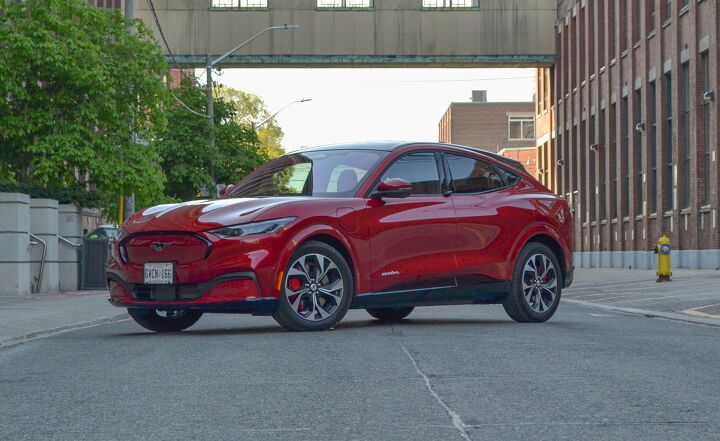





















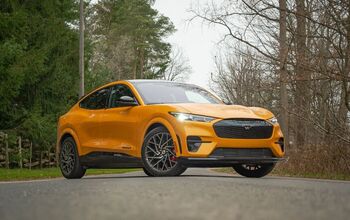

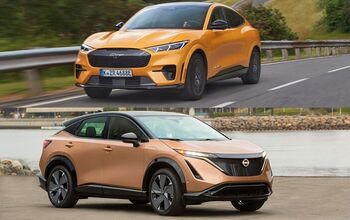


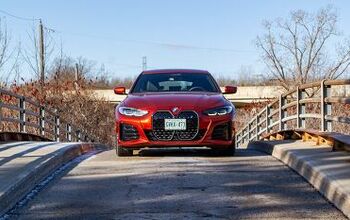
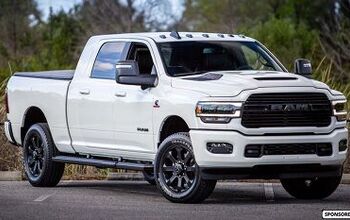
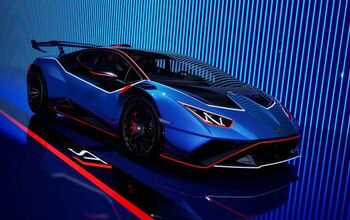
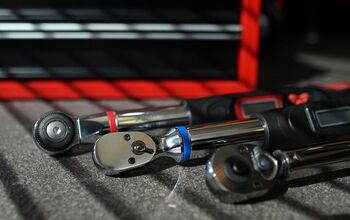


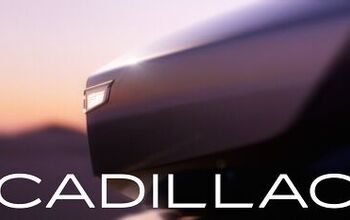

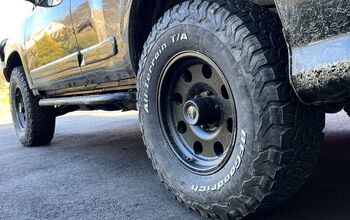
Comments
Join the conversation